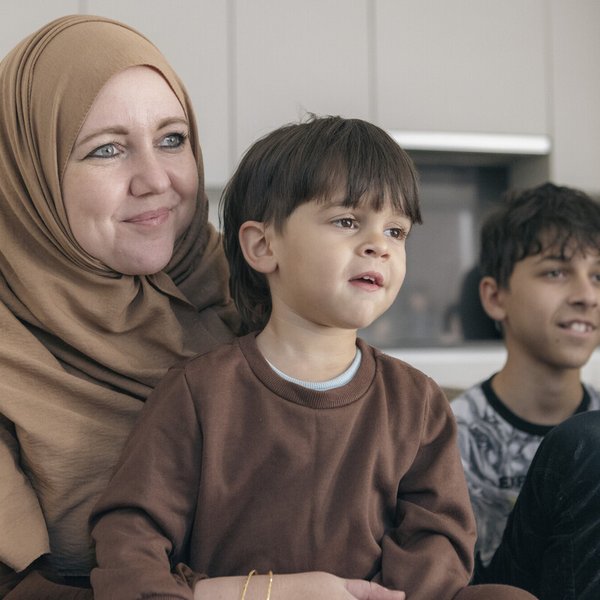
Refugee resettlement facts
What is refugee resettlement? How does it work? Who are the people coming to the UK? What happens when they get here? Here’s the low-down on resettlement.
Refugee resettlement facts
What is refugee resettlement? How does it work? Who are the people coming to the UK? What happens when they get here? Here’s the low-down on resettlement.
Refugee resettlement facts
What is refugee resettlement?
Refugees are usually unable to travel far beyond the borders of their home countries. They often live in refugee camps or urban areas for years; many children have lived their entire lives in refugee camps.
Refugee resettlement involves the selection and transfer of refugees from a country in which they have sought protection – usually somewhere with a large number of refugees – to a third country which has agreed to admit them as refugees where they can rebuild their lives.
Who is resettled?
Refugees are resettled if their lives are at risk, they are particularly vulnerable or they have specialised health needs, and there is no hope of them ever returning home. Many refugees who are selected by the UNHCR for resettlement have health needs that cannot be met in the country where they are living. 30% of refugees submitted for resettlement are survivors of violence and/or torture.
Where are people resettled?
According to the UNHCR the USA, followed by Canada and the UK, resettled the most refugees during 2019.
Europe generally accepts very few refugees for resettlement. Between 2004 - February 2021, the UK has been resettling around 750 refugees annually, from all over the world, through the Gateway Protection Programme. This was in addition to the 20,000 refugees from Syria who were resettled to the UK by February 2021.
How many refugees are resettled in the UK?
- Since 2004 until the end of March 2021, the UK had been resettling around 750 refugees every year through the Gateway Protection Programme
- The first refugees to arrive for resettlement under the Gateway Programme was a group of Liberian refugees, who arrived in Sheffield on 19 March 2004. Since then, the UK has offered places via this programme to people fleeing states well known for conflict or poor human rights records, including Somalia, Myanmar, Sudan and the Democratic Republic of Congo
- During times of crisis, the UK has also operated specific resettlement programmes to help offer protection on a larger scale. This includes people from Vietnam, Ugandan Asians and refugees fleeing the Balkans wars
- In January 2014, the Government announced that it would set up a special resettlement scheme to help Syrian refugees. This followed considerable public pressure and a campaign led by the Refugee Council
- For the first 18 months of its operation, this scheme was small, resettling just over 200 refugees
- In September 2015, the Prime Minister committed to resettling 20,000 refugees by 2020
- The UK reached this target in February 2021, when 20,000 refugees were resettled under the Vulnerable Person Resettlement Scheme (VPRS). In total, 20,319 people were resettled under the VPRS between March 2014 and February 2021 (this includes 239 resettled before the scheme was upscaled and who are not included in the 20,000 commitment)
- In January 2016, the Government asked the UN's Refugee Agency (UNHCR) to identify ‘children at risk’ – including unaccompanied children and those at risk of forced marriage - currently living in the Middle East and other conflict zones who could benefit from being resettled here
- By February 2021, 1,838 people had been resettled under the Vulnerable Children’s Resettlement (VCRS) scheme
- 280 refugees were resettled in the UK through the Community Sponsorship Scheme in the year ending September 2022.
- 6 people were resettled under the Mandate Protection Programme.
In July 2019, the Government introduced a new UK Resettlement scheme (UKRS) once the VPRS target had been met. Following this, the Government launched the new UK resettlement scheme (UKRS), bringing to an end the Vulnerable Person Resettlement Scheme (VPRS), Vulnerable Children Resettlement Scheme (VCRS), and the Gateway Scheme. So far only 1,882 people were resettled under the UKRS.
In August 2021, the government announced a new resettlement scheme for Afghans which intends to resettle 5,000 people in the first year. There have been just four people recorded as having been resettled under the new Pathway 2 of the Afghan Citizens Resettlement Scheme (ACRS) in the year ending September 2022.
refugees resettled to the UK in 2022
How does resettlement to the UK work?
- The UNHCR identifies refugees in need of resettlement. They then submit these candidates to the UK Government who decide which cases to accept
- Refugees who are to be resettled to Britain receive health assessments and cultural orientations prior to arrival. The International Organisation for Migration ensures their safe arrival into the UK
- Resettled refugees arrival in the UK is carefully planned. Local councils, other services and charities like the Refugee Council work together to ensure that everything is in place to ensure a smooth transition
- Resettled refugees are always met at the airport by organisations such as the Refugee Council. They are taken to their new homes – usually private lets – and they are helped to adapt to their new surroundings
- The Refugee Council supports refugees throughout their first one to three years in the country. We offer personalised support and help people access the job market, education, healthcare and mainstream services
- Once they are settled, resettled refugees are able to begin the process of rebuilding their lives in safety. They contribute to our country in a variety of ways. Refugees who have been resettled in Britain include people who have gone on to work in our NHS, teach our children, and open their own businesses
How long do resettled refugees stay?
- Refugees resettled through the Gateway Protection Programme arrive with Indefinite Leave to Remain (ILR). It is recognised that it is not safe for them to keep living in a refugee camp and there is very little hope of them ever returning home
- Syrian refugees arriving through the Vulnerable Persons Resettlement Scheme (VPRS) were initially given five years of Humanitarian Protection. Since 1 July 2017 they are granted five years of the Refugee Status
- Unlike refugees resettled through the Gateway Protection Programme, refugees arriving through the VPRS have been displaced for a relatively short period of time and the UK Government hopes that in the future they will be able to return to Syria
- Refugees resettled under the new, consolidated the UK Resettlement Scheme (UKRS) are granted five years of the Refugee Status
Of course, most refugees dream of going home one day when it’s safe to do so.
What rights do resettled refugees have?
All refugees, including those who are resettled through the Gateway Protection Programme, the Vulnerable Persons Resettlement Scheme and now the UK Resettlement Scheme are able to work and access mainstream services.
How is resettlement different to asylum?
- There is little difference between resettled refugees and refugees who are granted asylum. They are often fleeing the same conflicts and persecution. However, their journeys to safety are very different
- Refugee resettlement and the asylum system are separate processes. Refugees who are resettled are usually identified as refugees in camps near to their country of origin, before being flown to the country where they are being resettled. In the UK, people who are resettled here are already recognised as refugees prior to their arrival in the country, and they do not go through the asylum system
- Under international law, anyone has the right to claim asylum in the UK. However, as with most other countries, a refugee has to have already arrived in the UK before they are able to make a claim for asylum
- The UK offers no ‘asylum visa’ – this means there are very few safe ways for a refugee to reach the UK in order to claim asylum. Unlike resettled refugees, refugees who claim asylum in Britain have often undertaken perilous journeys in the hands of smugglers before arriving here
- The UK’s asylum system is tough and complex. Refugee protection is only granted to asylum seekers who can show the Government that they have a well-founded fear of persecution in their home country. There are many flaws in the Government’s decision-making process, and many people have to appeal to the courts in order to be recognised as refugees. People who are granted asylum receive five years’ refugee protection, after which they can apply for indefinite leave to remain
- The other main difference between refugees who are resettled here and refugees who are granted asylum is the support they receive once they have been recognised as a refugee. Resettled refugees are provided with housing and receive a year of specialist support to help them access the job market and mainstream services
- None of this support is available for refugees who have been granted asylum - they are left to fend for themselves. Many newly granted refugees find themselves homeless and destitute precisely at the point when the UK Government accepts they need protection.
What more could the UK be doing?
The UK has a proud tradition of protecting refugees but given the scale of the global refugee crisis facing the world, we could be doing much more to help:
- Expand the safe and regular routes to reach protection in the UK
- Improve the humanitarian response in Europe including humane reception conditions at borders and in transit countries
- Ensure access to a fair, effective and humane asylum system
- Improve conditions in countries hosting large numbers of displaced people
- Tackle the causes behind forced displacement
I was desperate for my daughters just to survive.
Aziz from Iran, Resettled under the Gateway Protection Programme

Please donate to help refugees rebuild their lives
Your gift can help refugees live safe and fulfilling lives, integrate into communities and play a part in Britain.


